Alston Spade Mill Pipeline (2022)
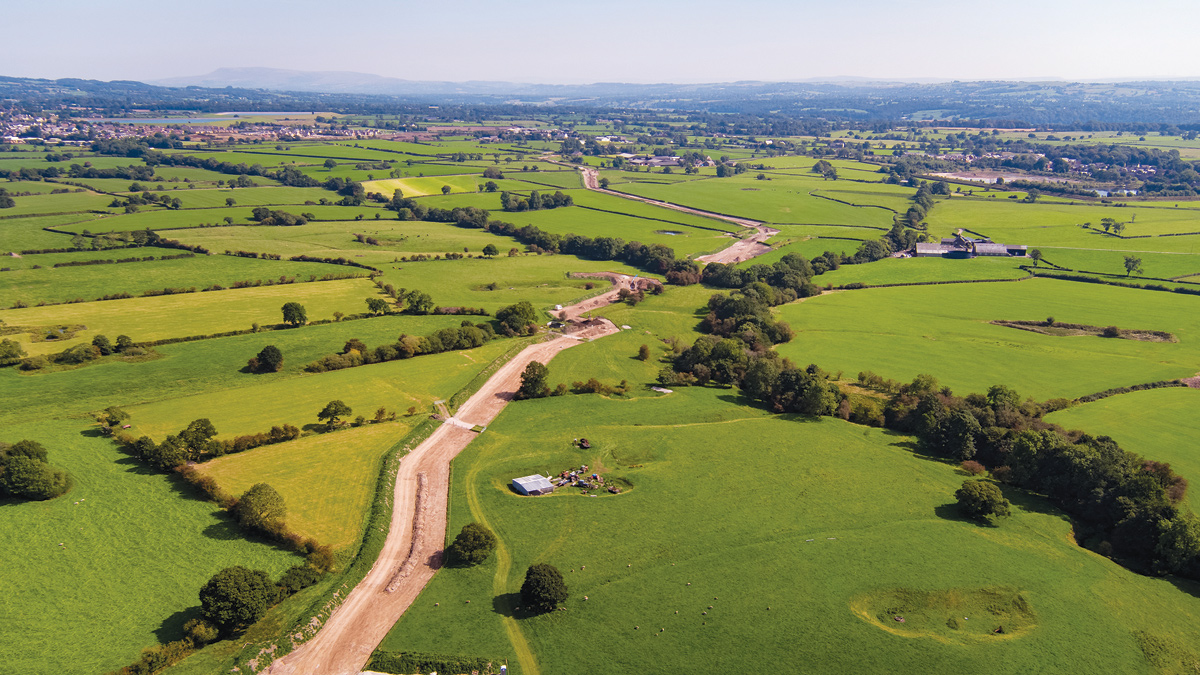
Alston Spade Mill Pipeline under construction - Courtesy of Advance-plus
The Alston Spade Mill Pipeline project forms a key part of the United Utilities AMP7 programme and will ensure that the currently untapped resource at four local reservoirs in Lancashire is utilised and will boost the available water in the network without having an additional impact on the environment. Currently the four reservoirs have been collecting and storing water from the north Pennines for decades but have not been used because United Utilities has not required the resource. However, with changes in water usage and climate change, United Utilities is planning ahead. Once complete the project will make available an additional 38 MLD, which is enough to serve around 90,000 average homes. Needs and investigation work has recommended that the construction of a new dedicated pipeline to transfer the flows to an existing water treatment works will best meet the requirements. The project was delivered by United Utilities’ construction delivery partner Advance-plus, a joint venture between MWH Treatment, J Murphy & Sons and Stantec UK.
Alston Spade Mill Pipeline: Supply chain – key participants
- Delivery partner: Advance-plus JV
- MWH Treatment
- J Murphy & Sons
- Stantec UK
- Geotechnical investigation: Geotechnics Ltd
- Trenchless solutions: Ken Rodney Construction Ltd
- Butt fusion welding & mechanical joints: Thermofuse Pipelines Ltd
- Land drainage & reinstatement: M&J Thistlethwaite Earthworks Ltd
- Highway reinstatement: Manchester Road Surfacing Ltd
- Electrical package: Lloyd Morris Electrical Ltd
- Polyethylene pipe: Aliaxis UK
- Ductile iron pipe: Electrosteel Castings (UK) Ltd
- Fittings: R2M Limited
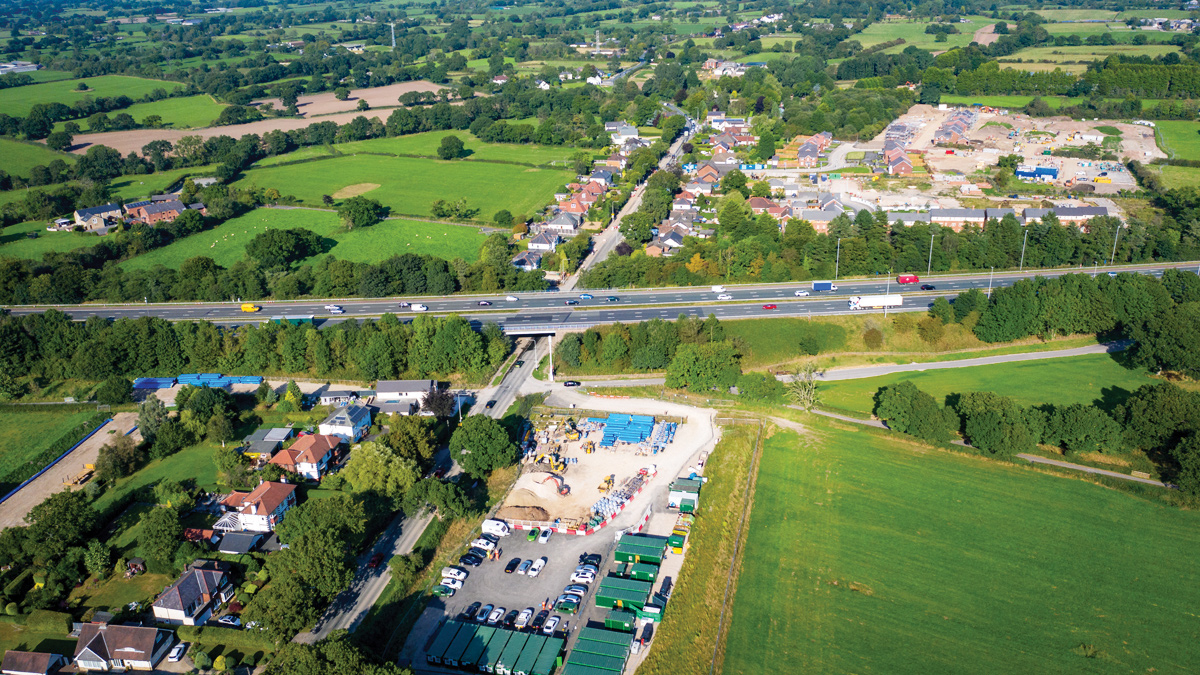
Main site compound – Courtesy of Advance-plus
Pipeline planning & design
The initial stages of design focused on the most optimum route for the 9.7km pipeline whilst mitigating the impact on ecology, the environment and ensuring the needs and requests of local landowners were factored in to project plans.
During the design period a series of pre-construction surveys were conducted which included ecology, topographical and ground investigation excavations.
The information from these pre-construction surveys were built into the design and through the utilisation of digital tools, the benefits and any potential clashes were identified. The results from these surveys formed the basis of the design and helped to identify and eliminate key project risks.
An understanding of the ground conditions across the agricultural land also enabled the team to understand how best to work with the land. The land needed returning back to owners upon completion and so drainage was a hot topic throughout discussions. Ground investigation work enabled the team to understand the make up on the land and where drainage would be required.
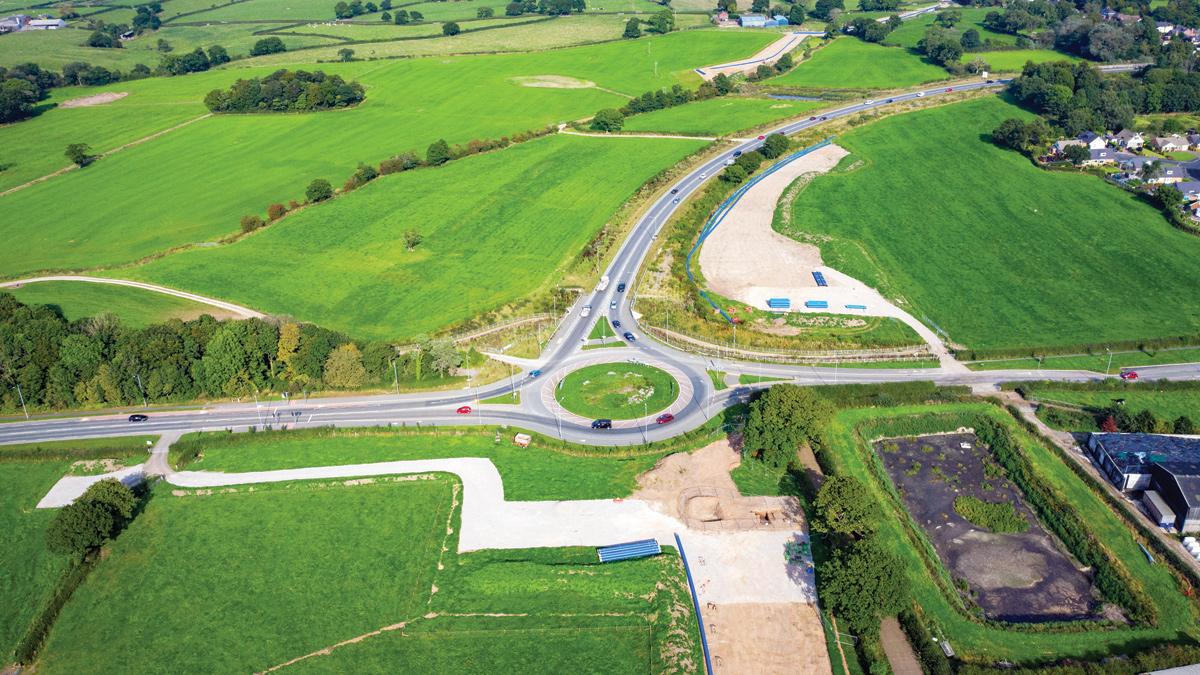
Pipeline crossing key arterial highway route – Courtesy of Advance-plus
The up-front investigation works also helped the team to understand local water courses and plan accordingly to ensure the pipeline wash out points and air valves were installed at the correct locations, whilst also helping the local ecology to continue to thrive. The early ecology surveys identified the presence of otters within the surroundings of a local watercourse.
These early surveys meant the team could select what construction techniques were required for specific sections of the pipeline and allowed the team to make alterations the route of the pipeline prior to starting on site – for example, slight alterations could be made to ensure established trees did not have to be removed.
Pipeline materials selection
The vast majority of the raw water pipeline has been constructed using 610mm polyethylene pipe from Aliaxis UK. The material was chosen to suit the topography of the land, the flexibility, and the ease of transporting it around the pipeline easement within agricultural land. The 12m-long pipeline sections were welded across the working area and placed into the excavations in sections. The longest welded section placed into the excavation at one time was just over 800m in length.
Parts of the new 9.7km pipeline had to be laid within busy arterial highway routes and here the team opted to use ductile iron pipe from Electrosteel Castings (UK) Ltd, which had preferential loading values and aided with installation.
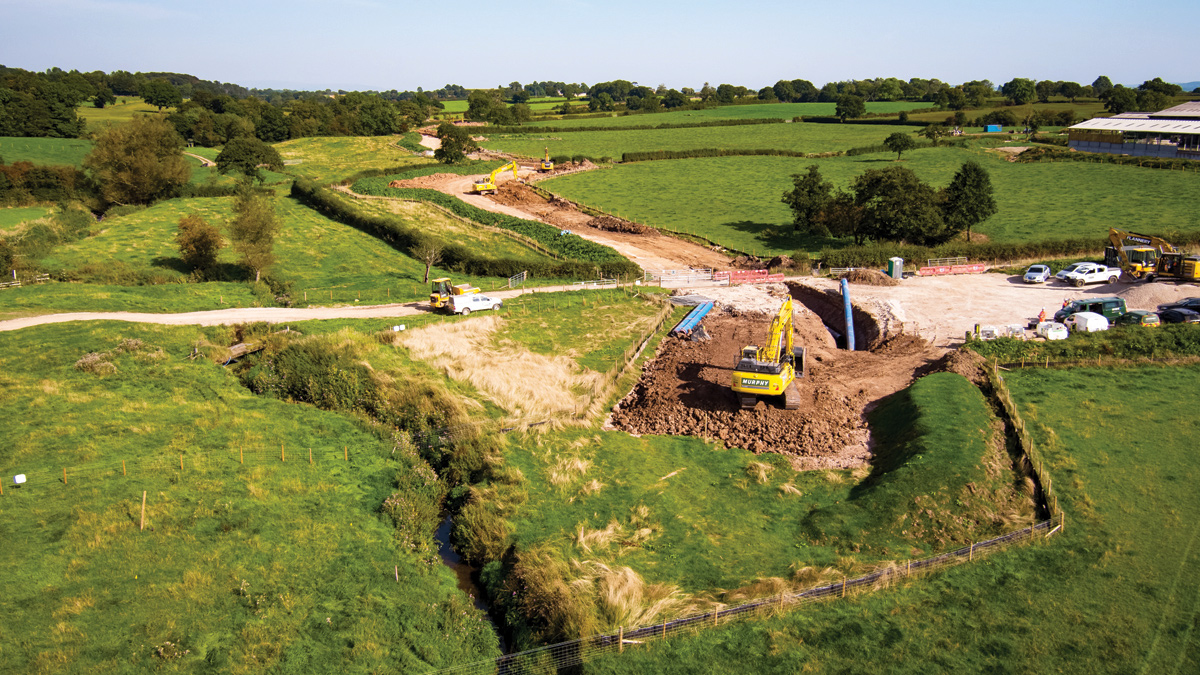
Working area – Courtesy of Advance-plus
Installation
At one location the pipeline route included almost 1km within the highway. The vast majority of this section was installed under local traffic management; however, the pipeline crossed the carriageway to avoid underground services and to make its way back into agricultural land. A 250m section of the installation had to be constructed under a full road closure, requiring a significant diversion managed by the site team and subcontracted traffic management organisation.
Highway crossings
At the same location the road runs beneath the motorway, and the team coordinated with both Highways England and Lancashire County Council to manage the works in this location.
The work under the motorway bridge was carried out after a series of discussions with stakeholders and a thorough understanding of the bridge construction, including trial holes to detect services and to keep a safe distance from the bridge abutments. The teams utilised safe excavating techniques, including restricting the reach of plant and equipment, monitoring vibration under the bridge structure, and utilising an independent structural surveying organisation to carry out pre and post works structural surveys on the bridge structure.
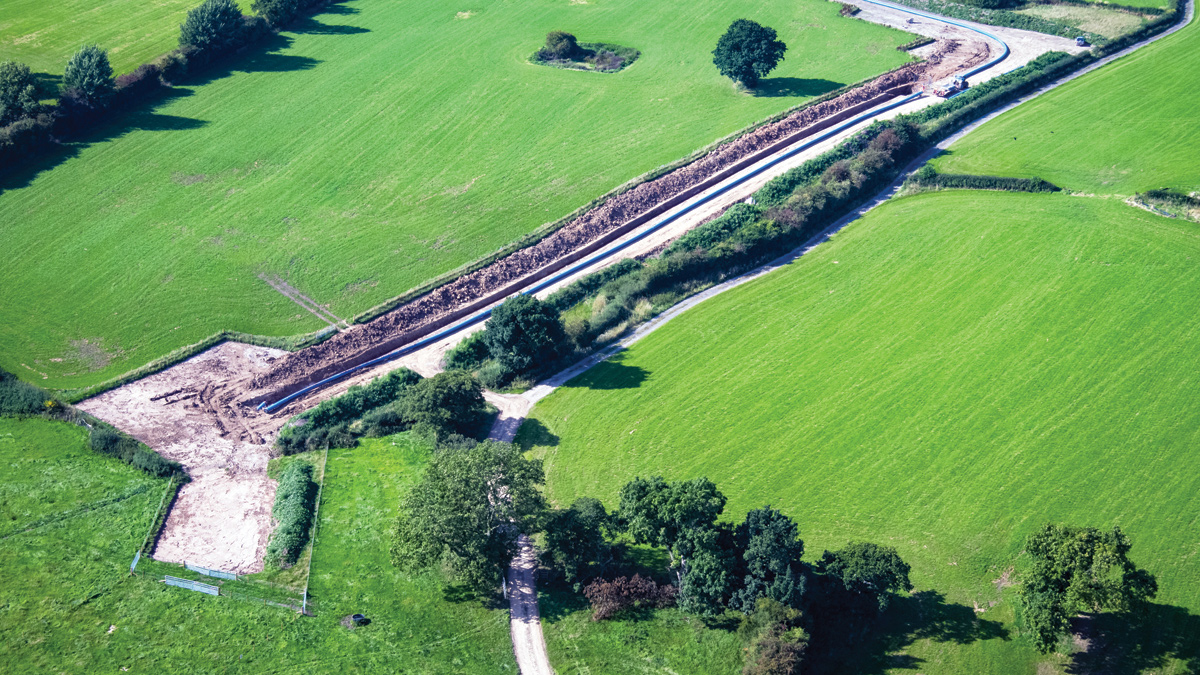
Installation of pipeline – Courtesy of Advance-plus
1km west, the pipeline team had to make two more major highway crossings, as well as negotiating a 33” trunk main. The team first hoped to utilise an existing duct at the first crossing but due to the positioning, the flexibility to get into the ducts could not be achieved. Understanding the impact of a road closure in this location, the team opted for a 250m-long, 820mm bore single horizontal directional drill to cross both the carriageway and 33” trunk main.
The settlement checks for this crossing were calculated to confirm the settlement was within a 5mm tolerance. The ground and pipe vibration monitoring was in place for 4-weeks prior to the work, during the works and 4-weeks after completion to ensure settlement was within tolerance. The information from this study was shared with the local highway authority who agreed for the drill to go ahead, through a collaborative approach this drill was successful & carried out to keep the project on programme and approaching the regulatory commitment date.
Water treatment works connection
Another 900m along the pipeline route is the water treatment works, where the newly utilised raw water source will be blended with the borehole water and pumped forward to a more capable site further along the network. To connect in the new source meant outages had to be planned on other assets. To ensure supplies were protected the outages had to be restricted to between 6-8 hours. Through a great collaborative effort with the project team, client and specialist subcontractor the connections were successfully made within the allocated outage times.
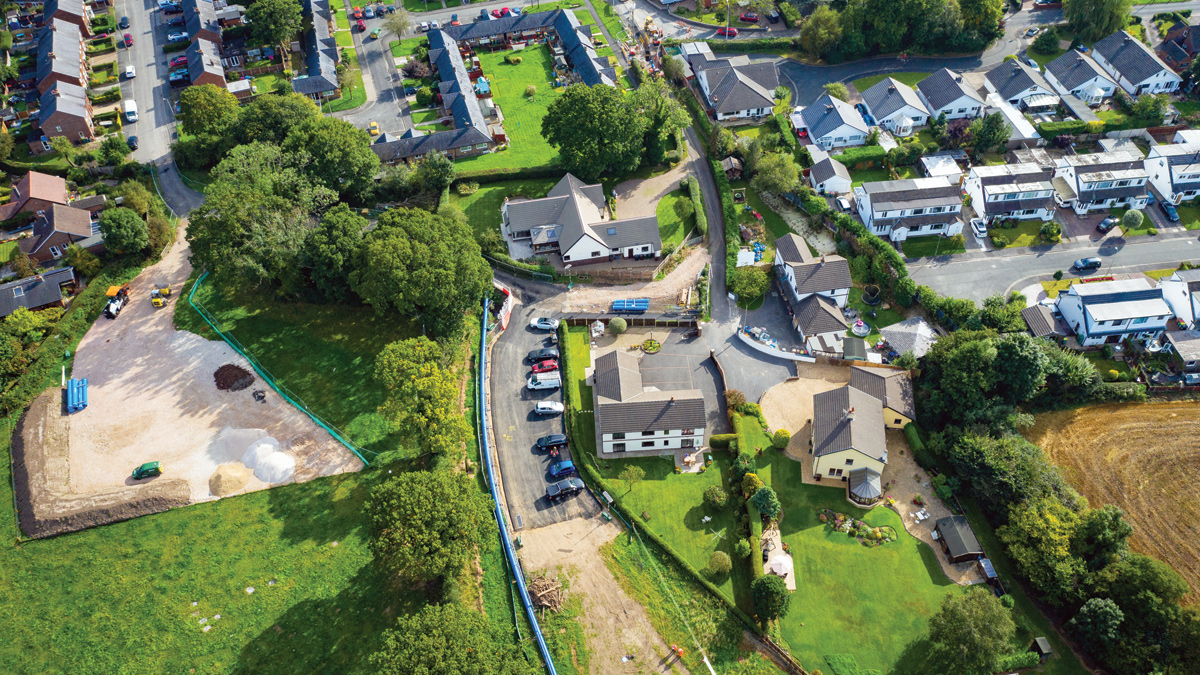
Treatment works connection site – Courtesy of Advance-plus
Outcome
Design of the £11m Alston Spade Mill Pipeline began in November 2020. Construction started in June 2021 and the project completed in March 2022. This project has increased the resilience of supplies and given United Utilities increased capabilities with being able to move water around the network in times of increased usage and pressure.






